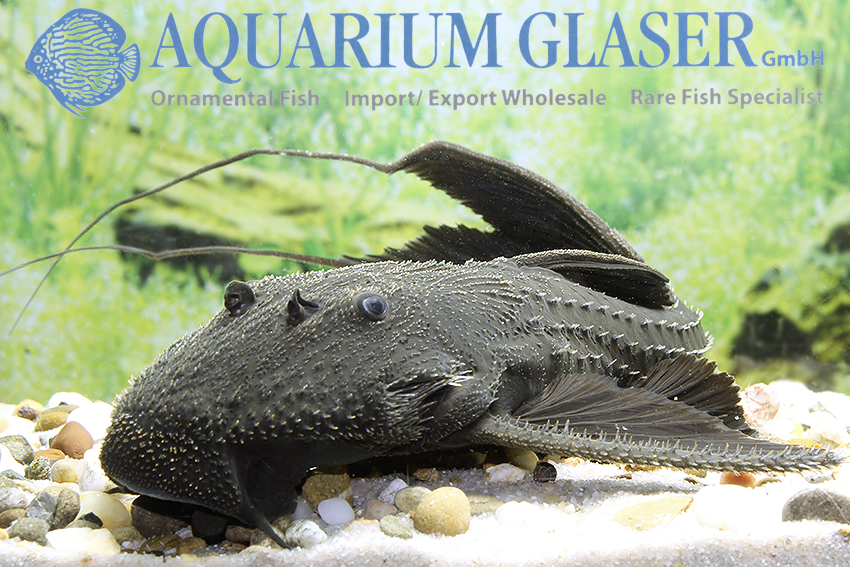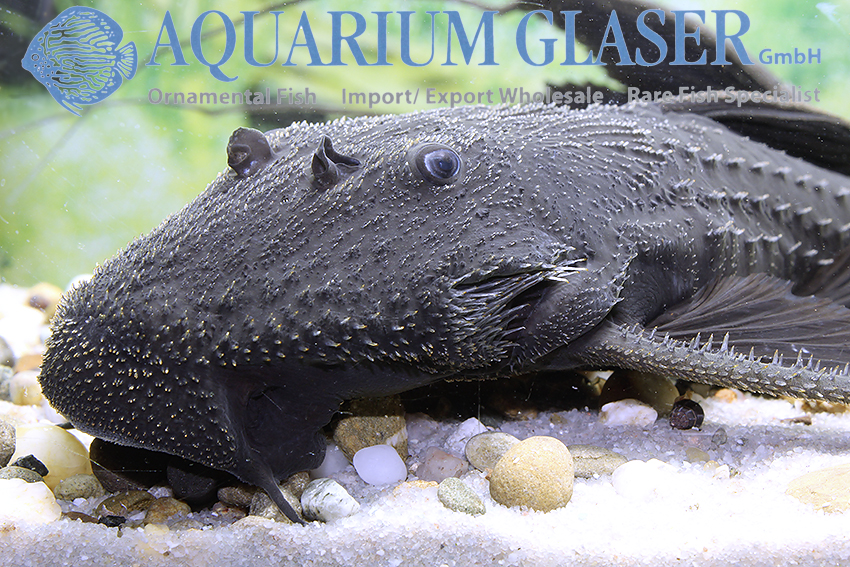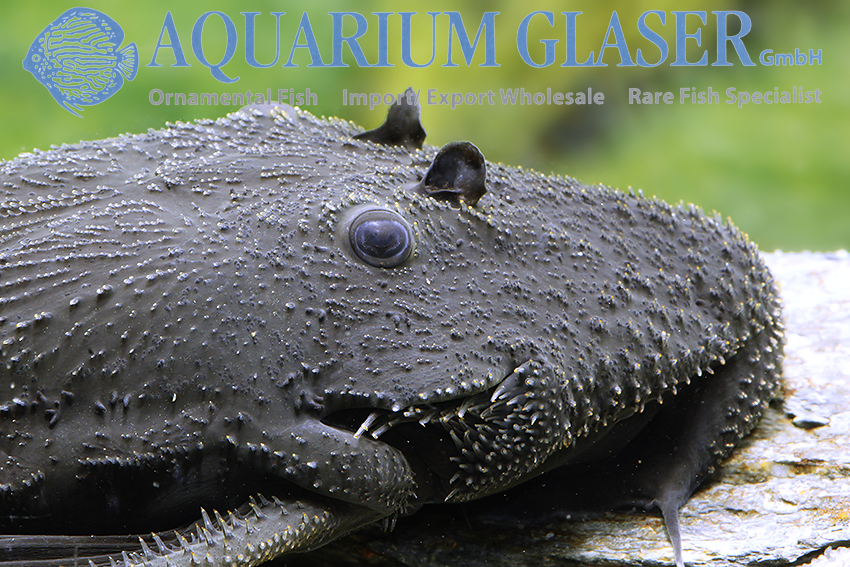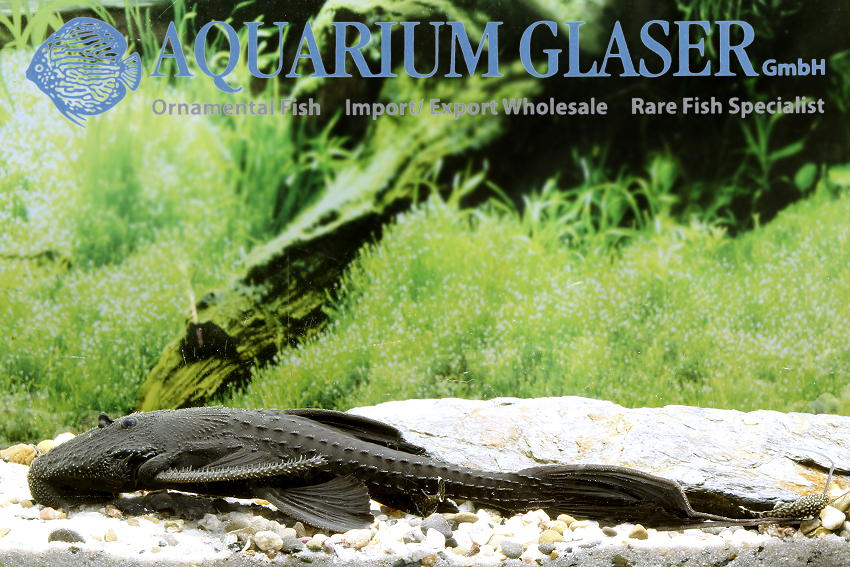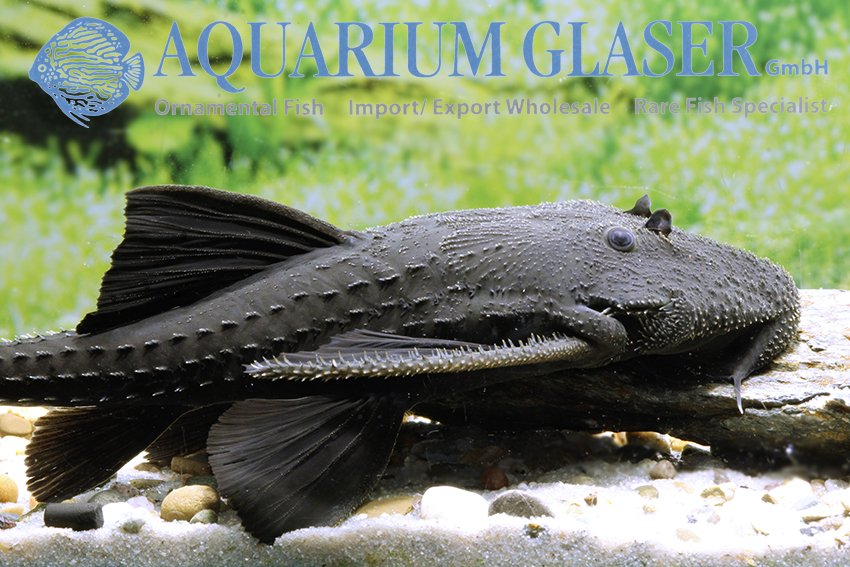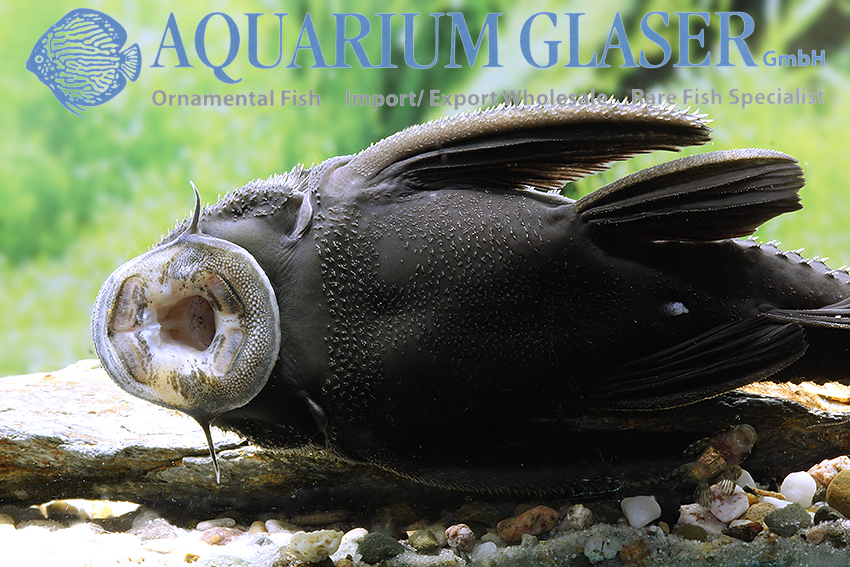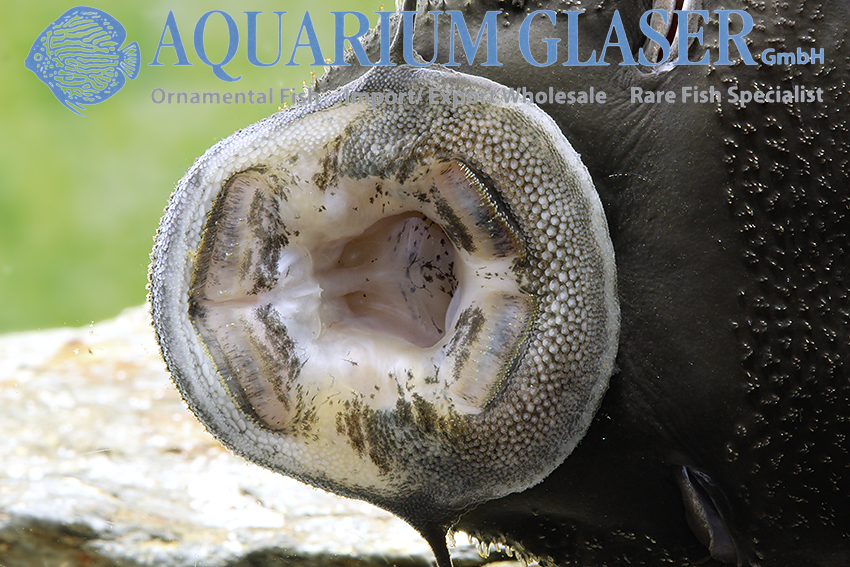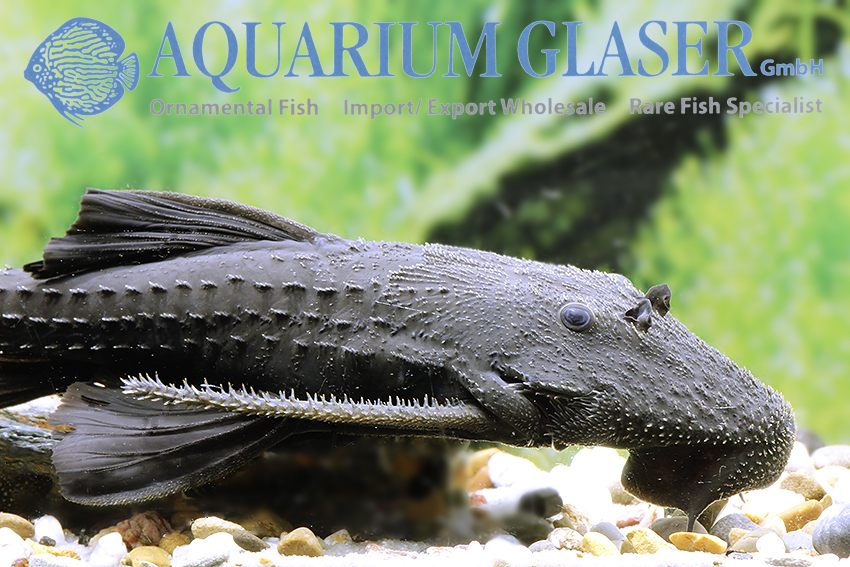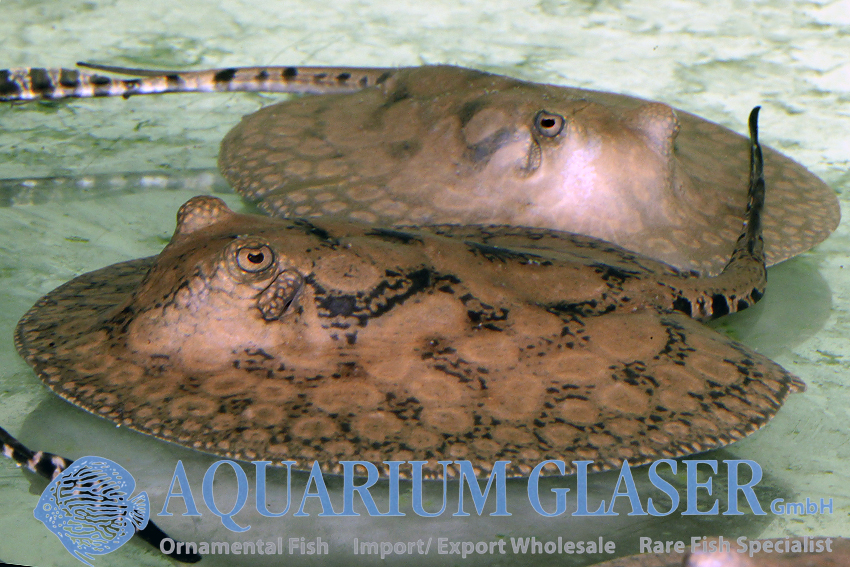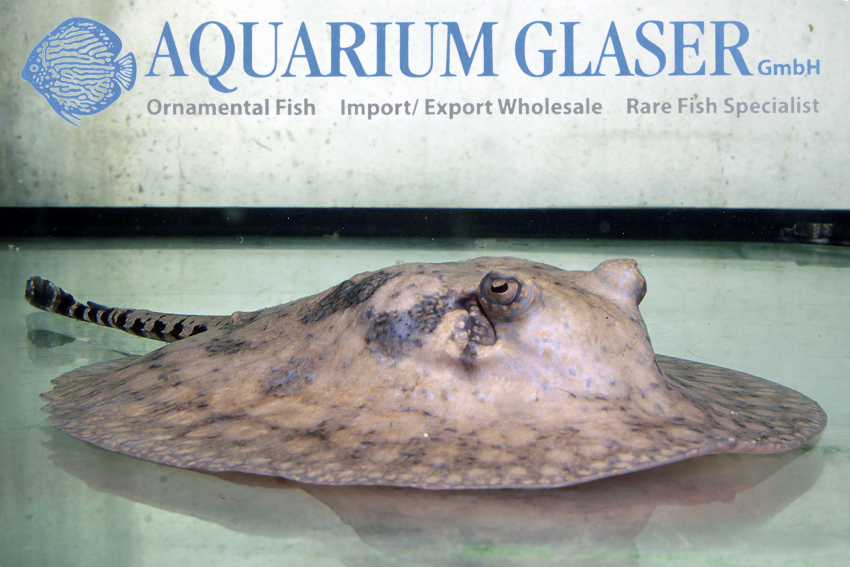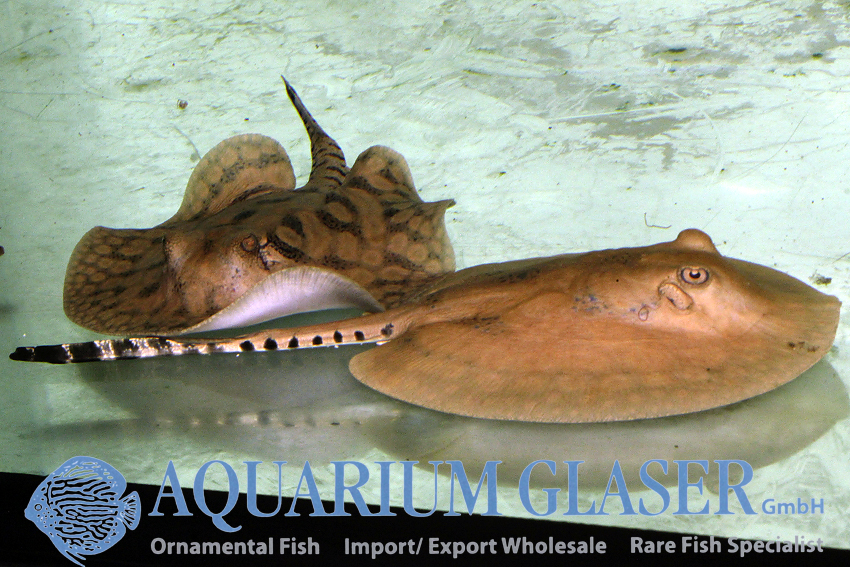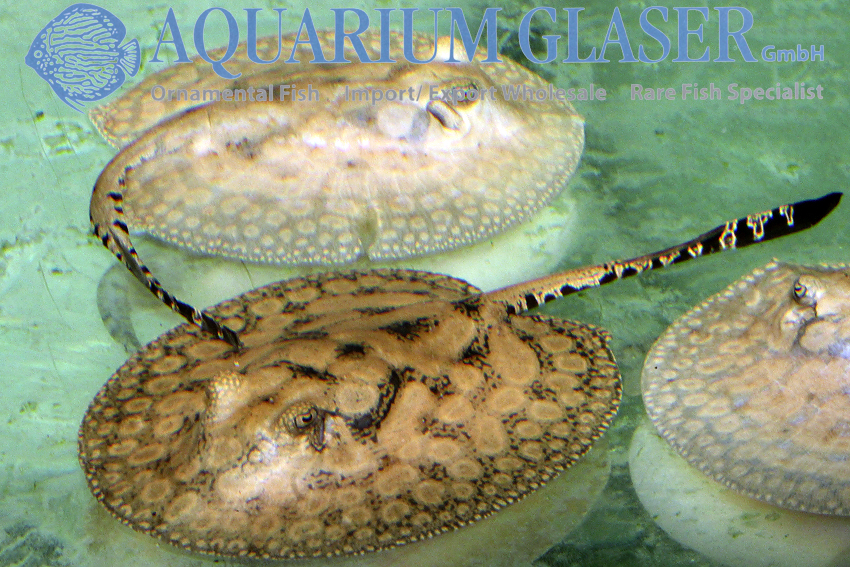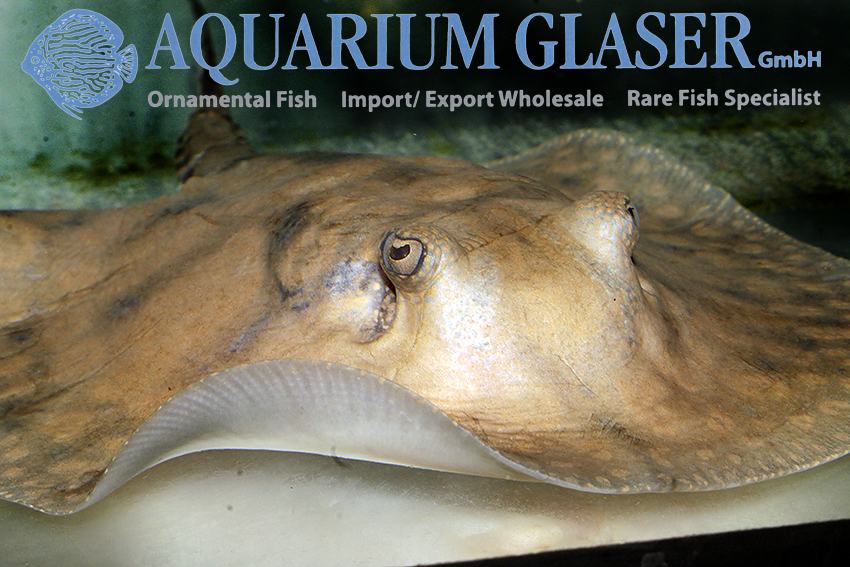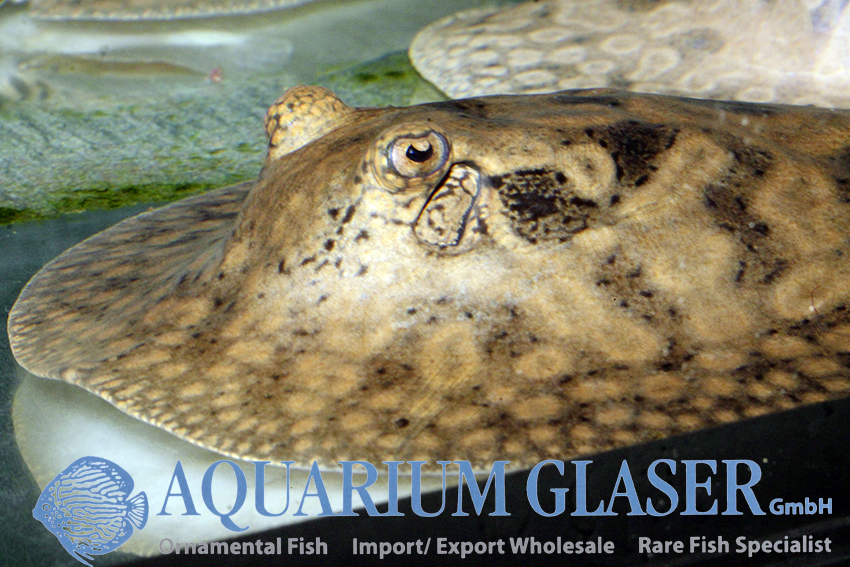Acanthicus hystrix is one of the great myths in the literal sense. With a length of almost one meter it is one of the largest loricariid catfishes at all. In addition, the species, which was already described in 1829, is extremely prickly: “hystrix” means “porcupine”!
Unfortunately, the specimen on which the description of this species is based was destroyed during the Second World War. Where it was captured is unknown. Thus, it is unclear which of the three or four Black Adonis Catfishes known so far is the “real” A. hystrix. For one of them, a form from the Rio Xingu, the L-number 155 was assigned. In the trade it has become common practice to refer to the Black Adonis Catfishes all as L155, regardless of origin. Our L155 come from the Furo Maguari, a tributary of the Rio Tocantins.
Black Adonis Catfish are fish for specialists who can accommodate these giants, which can also be quite aggressive. For show aquariums large Adonis catfish are excellent subjects. Our animals in the stock are currently 18-21 cm long.
For our customers: the animals have code 26480-L 155-6 on our stocklist. Please note that we only supply to wholesalers.





